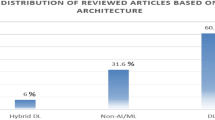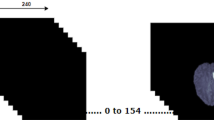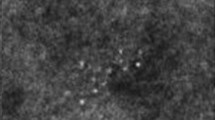Abstract
In the field of medicine, anomalous pathology prediction has become a major issue. Huma, instrument/device, and environmental errors have all contributed to the growth of these issues; yet, they can all be rectified with the use of the hybrid segmentation method. The main objective of this paper is to present a novel method, named as MS-IT2FCM, which targets the erroneous brain tumor diagnosis of abnormalities in many topographical Magnetic Resonance Imaging (MRI) regions. In the proposed method, we utilize the features of the Monkey Search algorithm and the Interval Type-II Fuzzy C-Means (IT2FCM) techniques. The uncertainties in the data are handled with interval type-II fuzzy numbers and search algorithm are used to optimize the results. Large datasets and the complex tumors can be easily examined and intervened upon by the developed method. Additionally, this could be a proactive measure implemented in clinical practice to benefit patients and physicians. The proposed methodology is implemented on the data set of BRATS 2018 and compare their results with the state-of-art. From the analysis, we conclude the results are better than those of the standard strategy in terms of predicting different diseases in MR brain imaging. The proposed method offers a clear distinction between the tumor and non-tumor portions (edema) and this clause may be included in medical pre-planning at all times.













Similar content being viewed by others
Data availability
Data sharing not applicable to this article as no datasets were generated or analyzed during the current study.
References
Adhikari SK, Sing JK, Basu DK, Nasipuri M (2015) Conditional spatial fuzzy C-means clustering algorithm for segmentation of MRI images. Appl Soft Comput 34:758–769
Alagarsamy S, Kamatchi K, Govindaraj V, Zhang Y, Thiyagarajan A (2019) Multi-channeled MR brain image segmentation: A new automated approach combining BAT and clustering technique for better identification of heterogeneous tumors. Biocybernetics and Biomedical Engineering 39(4):1005–1035
Alagarsamy S, Zhang YD, Govindaraj V, Rajasekaran MP, Sankaran S (2021) Smart identification of topographically variant anomalies in brain magnetic resonance imaging using a fish school-based fuzzy clustering approach. IEEE Trans Fuzzy Syst 29(10):3165–3177
Farzamnia A, Hazaveh SH, Siadat SS, Moung EG (2023) MRI Brain Tumor Detection Methods Using Contourlet Transform Based on Time Adaptive Self-Organizing Map in IEEE Access 11:113480–113492
Ghaffari M, Sowmya A, Oliver R (2019) Automated brain tumor Segmentation using multimodal brain scans, a survey based on models submitted to the BraTS 2012–18 challenges. IEEE Rev Biomed Eng 13:156–168
Egger C, Opfer R, Wang C, Kepp T, Sormani MP, Spies L, Barnett M, Schippling S (2017) MRI FLAIR lesion segmentation in multiple sclerosis: Does automated segmentation hold up with manual annotation. Neuro Image: Clinical 13:264–270
Farhi L, Yusuf A, Raza RH (2017) Adaptive stochastic segmentation via energy-convergence for brain tumor in MR images. Journal of Visual Communication and Image 46:303–311
Gonzalez CI, Melin P, Castro JR, Castillo O, Mendoza O (2016) Optimization of interval type-2 fuzzy systems for image edge detection. Appl Soft Comput 47:631–643
Kaya IE, Pehlivanli AC, Sehizhardes EG, Ibrikci T (2017) PCA based clustering for brain tumor segmentation of T1w MRI images. Computer Methods and Programs in Bio-Medicine 140:19–28
Pagola M, Lopez-Molina C, Fernandez J, Barrenechea E, Bustince H (2013) Interval type-2 fuzzy sets constructed from several membership functions: Application to the fuzzy thresholding algorithm. IEEE Trans Fuzzy Syst 21(2):230–244
Panda R, Agrawal S, Samantaray L, Abraham A (2017) An evolutionary gray gradient algorithm for multilevel thresholding of brain MR images using soft computing techniques. Appl Soft Comput 50:94–108
Pereira S, Pinto A, Alves V, Carlos Silva A (2016) Brain tumor segmentation using convolutional neural networks in MRI images. IEEE Transaction on Medical Imaging 5(5):1240–1251
Qadir MS, Bilgin G (2023) Active learning with Bayesian CNN using the BALD method for hyperspectral image classification. Mesopotamian Journal of Big Data 2023:53–60
Singh C, Bala A (2018) A DCT-based local and non-local fuzzy C-means algorithm for segmentation of brain magnetic resonance images. Appl Soft Comput 68:447–457
Mijwil MM, Doshi R, Hiran KK, Unogwu OJ, Bala I (2023) MobileNetV1-based deep learning model for accurate brain tumor classification. Mesopotamian Journal of Computer Science 2023:32–41
He B, Lu Q, Lang J, Yu H, Peng C, Bing P, Tian G (2020) A new method for CTC images recognition based on machine learning. Front Bioeng Biotechnol 8. https://doi.org/10.3389/fbioe.2020.00897
Zaitoon R, Syed H (2023) RU-Net2+: A deep learning algorithm for accurate brain tumor segmentation and survival rate prediction. IEEE Access 11:118105–118123
Wang W, Qi F, Wipf DP, Cai C, Yu T, Li Y, Wu W (2023) Sparse Bayesian learning for end-to-end EEG decoding. IEEE Trans Pattern Anal Mach Intell 45(12):15632–15649. https://doi.org/10.1109/TPAMI.2023.3299568
Zarandi MHF, Zarinbal M, Izadi M (2011) Systematic image processing for diagnosing brain tumors: A Type-II fuzzy expert system approach. Appl Soft Comput 11(1):285–294
Zarinbal M, Fazel Zarandi MH, Turksen IB, Izadid M (2014) Interval type-2 fuzzy image processing expert system for diagnosing brain tumors. In: IEEE Conference on Norbert Wiener in the 21st Century(21WC). IEEE, Boston, MA, pp 1–8
Zhan T, Zhan Y, Liu Z, Xiao L, Wei Z (2015) Automatic method for white matter lesion segmentation based on T1-fluid-attenuated inversion recovery images. IET Comput Vis 9(4):447–455
Zhuang Y, Liu H, Song E, Hung C (2023) A 3D cross-modality feature interaction network with volumetric feature alignment for brain tumor and tissue segmentation. IEEE J Biomed Health Inform 27(1):75–86
Adelaja O, Alkattan H (2023) Operating artificial intelligence to assist physicians diagnose medical images: A narrative review. Mesopotamian Journal of Artificial Intelligence in Healthcare 2023:45–51
Lu S, Yang B, Xiao Y, Liu S, Liu M, Yin L, Zheng W (2023) Iterative reconstruction of low-dose CT based on differential sparse. Biomed Signal Process Control 79:104204. https://doi.org/10.1016/j.bspc.2022.104204
Sun L, Zhang M, Wang B, Tiwari P (2023) Few-Shot Class-Incremental Learning for Medical Time Series Classification. IEEE J Biomed Health Inform. https://doi.org/10.1109/JBHI.2023.3247861
Vishnuvarthanan A, Rajasekaran MP, Govindaraj V, Zhang Y, Thiyagarajan A (2017) An automated hybrid approach using clustering and nature inspired optimization technique for improved tumor and tissue segmentation in magnetic resonance brain images. Appl Soft Comput 57:399–426
Zhao R, Tang W (2008) Monkey algorithm for global numerical optimization. Journal of Uncertain Systems 2(3):165–176
Tong J, Zhao Y, Zhang P, Chen L, Jiang L (2019) MRI brain tumor segmentation based on texture features and kernel sparse coding. Biomed Signal Process Control 47:387–392
Gonzalez CI, Castro JR, Meli P, Castillo O (2015) Cuckoo search algorithm for the optimization of type-2 fuzzy image edge detection systems. In: IEEE Conference on Evolutionary Computation (CEC). IEEE, Sendai, Japan, pp 978–983
Sikka K, Sinha N, Singh PK, Mishra AK (2009) A fully automated algorithm under modified FCM framework for improved brain MR image segmentation. Magn Reson Imaging 27(7):994–1004
Bakas S, Akbari H, Sotiras A, Bilello M, Rozycki M, Kirby JS (2017) Advancing the Cancer Genome Atlas glioma MRI collections with expert segmentation labels and radiomic features. Nature Scientific Data 4:170117
Bakas S, Reyes M, Jakab A, Bauer S, Rempfler M, Crimi A (2018) Identifying the best machine learning algorithms for brain tumor segmentation, progression assessment, and overall survival prediction in the BRATS challenge. arXiv preprint arXiv:1811.02629
Ilunga-Mbuyamba E, Avina-Cervantes JG, Garcia-Perez A, Romero-Troncoso RDA, Aguirre-Ramos H, Cruz-Aceves I, Chalopin C (2017) Localized active contour model with background intensity compensation applied on automatic MR brain tumor segmentation. Neuro computing 220:84–97
Muhammad K, Khan S, Del Ser J (2021) Deep learning for multigrade brain tumor classification in smart healthcare systems: A prospective survey. IEEE Transactions on Neural Networks and Learning Systems 32(2):507–522
Sun L, Shao W, Wang M, Zhang D (2019) High-order feature learning for multi-atlas based label fusion: Application to brain segmentation with MRI. IEEE Transaction on Image Processing 29:2702–2713
Han M, He W, He Z, Yan X, Fang X (2022) Anatomical characteristics affecting the surgical approach of oblique lateral lumbar interbody fusion: an MR-based observational study. J Orthop Surg Res 17(1):426. https://doi.org/10.1186/s13018-022-03322-y
Zaib R, Ourabah O (2023) Large scale data using K-means. Mesopotamian Journal of Big Data 2023:36–45
Jin K, Gao Z, Jiang X, Wang Y, Ma X, Li Y, Ye J (2023) MSHF: A Multi-Source Heterogeneous Fundus (MSHF) dataset for image quality assessment. Scientific Data 10(1):286. https://doi.org/10.1038/s41597-023-02188-x
Zhang R, Li L, Zhang Q, Zhang J, Xu L, Zhang B, Wang B (2023) Differential feature awareness network within antagonistic learning for infrared-visible object detection. IEEE Trans Circuits Syst Video Technol. https://doi.org/10.1109/TCSVT.2023.3289142
Acknowledgements
Sincere gratitude is extended by the author(s) to Dr. K.G. Srinivasan, MD, RD, Consultant Radiologist, and Dr. K.P. Usha Nandhini, DNB, KGS Advanced MR & CT Scan—Madurai, Tamilnadu, India, for providing patient data and trustworthy assistance for the practical confirmation of the suggested technique”.
Author information
Authors and Affiliations
Corresponding author
Ethics declarations
Ethical approval
The article does not contain any studies with human participants or animal performed by any of the authors.
Conflict of interest
The authors declare that they have no conflict of interest.”
Additional information
Publisher's Note
Springer Nature remains neutral with regard to jurisdictional claims in published maps and institutional affiliations.
Rights and permissions
Springer Nature or its licensor (e.g. a society or other partner) holds exclusive rights to this article under a publishing agreement with the author(s) or other rightsholder(s); author self-archiving of the accepted manuscript version of this article is solely governed by the terms of such publishing agreement and applicable law.
About this article
Cite this article
Garg, H., Alagarsamy, S., Nagarajan, D. et al. Smart system for identifying the various pathologies in MR brain image using Monkey Search based Interval Type-II Fuzzy C-Means technique. Multimed Tools Appl (2024). https://doi.org/10.1007/s11042-024-18808-6
Received:
Revised:
Accepted:
Published:
DOI: https://doi.org/10.1007/s11042-024-18808-6




